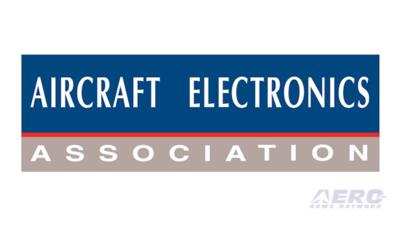Thu, Aug 10, 2017
ADS-B Out Installations Must Support Pilot-Entered Data
The FAA recently published a Legal Interpretation regarding Flight ID that essentially requires the aircraft Flight ID (either aircraft call sign or aircraft registration number) to be accurate to the aircraft's flight plan. Therefore, if the aircraft operates or is likely to operate with a dynamic call sign, the ADS-B Out installation must be able to support pilot-entered Flight ID in order to be rule compliant.

This is not to say that approved equipment is deficient. The Minimum Operational Performance Standards (MOPS) for the equipment allows for either information to be programmed into their equipment. It is a sales issue, in that "one-size ADS-B Out doesn't fit all flight missions."
According to the Aug. 3, 2017, Legal Interpretation, citing 14 C.F.R. 91.227(d)(8), the FAA states: "It is clear from the NPRM and final rule preambles that § 91.227(d)(8) is meant to ensure that ATC is able to correlate flight plan information with information presented on the radar display. Therefore, to satisfy § 91.227(d)(8), a pilot would have to provide the same call sign on his or her flight plan as he or she transmits out using ADS-B."
14 C.F.R. 91.227(d)(8) states, in part:
§ 91.227 Automatic Dependent Surveillance-Broadcast (ADS-B) Out equipment performance requirements.
(d) Minimum Broadcast Message Element Set for ADS-B Out. Each aircraft must broadcast the following information, as defined in TSO-C166b or TSO-C154c. The pilot must enter information for message elements listed in paragraphs (d)(7) through (d)(10) of this section during the appropriate phase of flight.
(8) An indication of the aircraft's call sign that is submitted on the flight plan, or the aircraft's registration number, except when the pilot has not filed a flight plan, has not requested ATC services, and is using a TSO-C154c self-assigned temporary 24-bit address.
The Aircraft Electronics Association (AEA) notes that this places an additional knowledge burden on the installing agency to ensure that the customers are purchasing mission-appropriate equipment. Should the customer routinely fly with a dynamic call sign such as EMS, flight schools or volunteer organizations, they will need the ability for the pilot to change their ADS-B Out Flight ID to align with their flight plan call sign.
The AEA said in a statement that it is disappointed that this topic is just now coming to light, seven and a half years from the date the rule was published. In addition, the agency will need to find a remedy for any ADS-B Out system that may not support a dynamic Flight ID that was installed prior to this interpretation (Aug. 3, 2017).
(Source: AEA)
More News
From 2023 (YouTube Version): Legacy of a Titan Robert (Bob) Anderson Hoover was a fighter pilot, test pilot, flight instructor, and air show superstar. More so, Bob Hoover was an i>[...]
Get The Latest in Aviation News NOW on Instagram Are you on Instagram yet? It's been around for a few years, quietly picking up traction mostly thanks to everybody's new obsession >[...]
Aero Linx: B-52H Stratofortress The B-52H Stratofortress is a long-range, heavy bomber that can perform a variety of missions. The bomber is capable of flying at high subsonic spee>[...]
Altimeter Setting The barometric pressure reading used to adjust a pressure altimeter for variations in existing atmospheric pressure or to the standard altimeter setting (29.92).>[...]
"Knowing that we play an active part in bettering people's lives is extremely rewarding. My team and I are very thankful for the opportunity to be here and to help in any way we ca>[...]
 Classic Aero-TV: Remembering Bob Hoover
Classic Aero-TV: Remembering Bob Hoover ANN FAQ: Follow Us On Instagram!
ANN FAQ: Follow Us On Instagram! ANN's Daily Aero-Linx (05.15.24)
ANN's Daily Aero-Linx (05.15.24) ANN's Daily Aero-Term (05.15.24):Altimeter Setting
ANN's Daily Aero-Term (05.15.24):Altimeter Setting Aero-News: Quote of the Day (05.16.24)
Aero-News: Quote of the Day (05.16.24)



